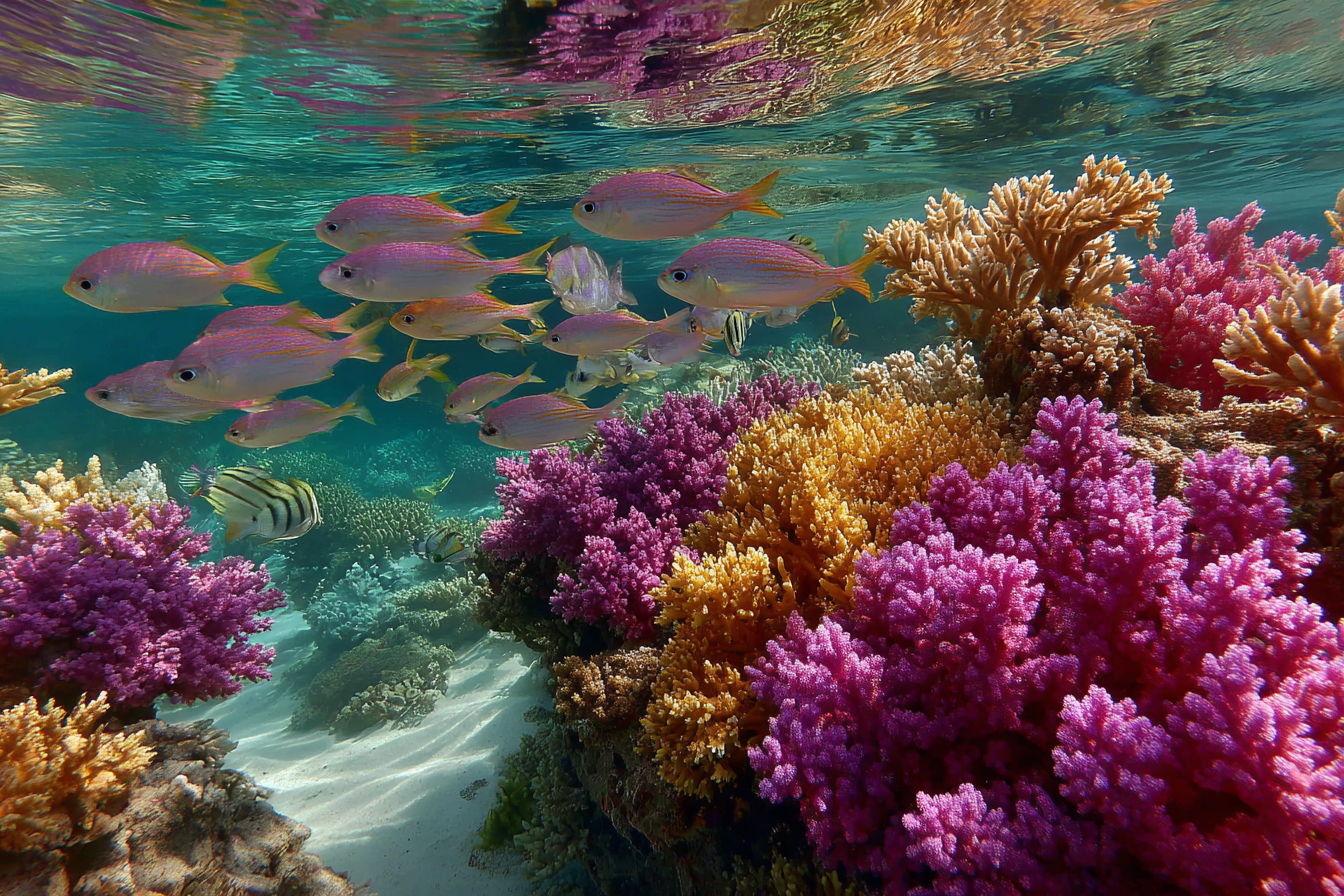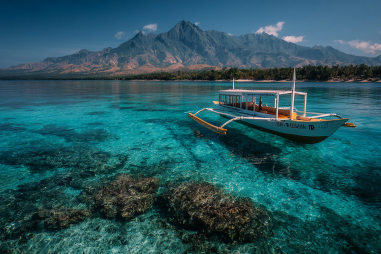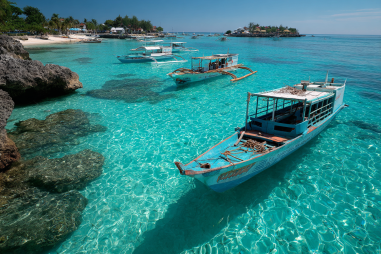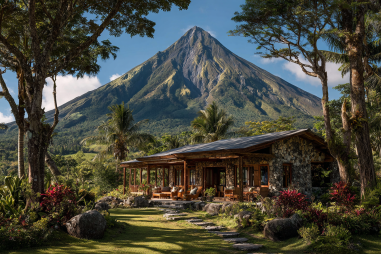Malapascua, a small island located in the Philippines, is renowned not just for its powdery white beaches and crystal-clear waters but also for its extraordinary marine biodiversity. For anyone passionate about marine life, this island offers a fascinating underwater world brimming with unique species and vibrant ecosystems. Whether you’re a seasoned diver or a snorkeler eager to explore the ocean’s treasures, Malapascua’s rich marine habitat provides an unforgettable experience.
Overview of Malapascua’s Marine Ecosystems
Malapascua’s surrounding waters host diverse marine ecosystems, ranging from coral reefs and sandy bottoms to deep drop-offs and seagrass beds. These habitats support an astonishing variety of marine species, each adapted to their unique environment. The island’s location in the Coral Triangle — the global epicenter of marine biodiversity — ensures that its underwater landscapes are teeming with life. From tiny macro creatures hidden among corals to larger pelagic animals cruising the open waters, Malapascua offers a well-balanced ecosystem that delights every marine enthusiast.
The island’s reefs are predominantly fringing reefs, growing close to the shoreline, making them easily accessible for snorkeling and diving. These reefs provide shelter and feeding grounds for countless fish species, crustaceans, and other marine invertebrates, forming a vibrant underwater community. The interplay between coral reefs, sandy seabeds, and deep oceanic trenches creates a dynamic environment where marine life thrives in abundance.
Key Species: Thresher Sharks, Nudibranchs, and Manta Rays
Perhaps the most famous marine residents of Malapascua are the thresher sharks. These elusive creatures are known for their incredibly long, whip-like tails and graceful movements. What makes Malapascua special is that it is one of the very few places in the world where divers can reliably encounter thresher sharks early in the morning at Monad Shoal, a nearby dive site. This rare opportunity draws divers globally, eager to witness these magnificent sharks in their natural habitat.
Besides the thresher sharks, Malapascua is also a hotspot for nudibranch enthusiasts. Nudibranchs, often called sea slugs, are colorful and delicate marine gastropods that can be found crawling on coral surfaces and rocky substrates. Their vibrant colors and intricate patterns make them a favorite subject for underwater photographers and macro divers. The variety of nudibranch species around the island signifies healthy reef environments and adds to the biological richness of the area.
Manta rays, another spectacular species, occasionally visit the nearby waters. Known for their impressive wingspans and gentle nature, manta rays provide an awe-inspiring sight when spotted gliding through the water. While sightings may not be as frequent as thresher sharks, the chance to see these majestic creatures adds to Malapascua’s appeal as a diverse and rewarding marine destination.
Coral Reefs and Their Importance
Coral reefs are the cornerstone of Malapascua’s marine biodiversity. They provide habitat, food, and nursery grounds for countless marine organisms. These reefs are built over thousands of years by tiny coral polyps that create complex structures essential to underwater life. Healthy coral reefs also act as natural barriers that protect the island from strong waves and storm surges, safeguarding both human communities and coastal ecosystems.
The coral reefs surrounding Malapascua exhibit a variety of hard and soft corals, each playing a crucial role in maintaining ecological balance. Hard corals form the physical structure of the reefs, while soft corals contribute to the intricate habitats that shelter smaller species. The reefs support a wide array of fish species ranging from tiny damselfish to larger groupers, and their health directly influences the abundance and diversity of marine life.
Conservation Efforts and Marine Sanctuaries
Recognizing the invaluable marine wealth, local communities and organizations have been proactive in conserving Malapascua’s marine environment. Several marine protected areas (MPAs) and sanctuaries have been established around the island to safeguard its underwater treasures. These initiatives aim to reduce harmful practices such as overfishing, destructive fishing methods, and coral harvesting, ensuring that the biodiversity can sustain itself for generations to come.
Marine conservation efforts include:
- Strict regulations on fishing and collection of marine organisms
- Education programs for local fishermen and tourists about sustainable practices
- Regular monitoring and reef restoration projects
- Community-based tourism that promotes responsible interaction with marine life
These efforts have played a vital role in maintaining Malapascua’s status as a premier dive destination and a refuge for marine species. By supporting these initiatives, visitors directly contribute to the protection and preservation of the underwater environment.
How Divers and Snorkelers Can Responsibly Enjoy Marine Life
Experiencing Malapascua’s marine biodiversity is truly special, but it comes with a responsibility to tread lightly and protect what makes it so unique. Whether you’re diving or snorkeling, adhering to responsible practices helps minimize human impact on delicate ecosystems.
Here are some tips for responsible enjoyment:
- Do not touch or disturb marine creatures: Many species, including corals and sharks, are sensitive to human contact. Maintain a respectful distance.
- Avoid standing on or kicking corals: Corals are fragile and can be destroyed by careless movements.
- Use reef-safe sunscreen: Conventional sunscreens contain chemicals harmful to corals—choose products labeled as reef-safe.
- Follow local guidelines and dive briefings: Dive operators and guides provide essential information to protect the ecosystem and ensure your safety.
- Don’t feed the fish or marine animals: Feeding can alter natural behaviors and disrupt the ecosystem.
By respecting these guidelines, visitors help maintain the vibrant beauty and ecological integrity of Malapascua’s marine habitats.
Best Spots for Observing Marine Biodiversity
Malapascua boasts several prime locations to witness its rich marine life. Some of the top dive and snorkel sites include:
- Monad Shoal: The renowned cleaning station where thresher sharks gather during early mornings, making it a must-visit for divers.
- Gato Island: Famous for its caves, tunnels, and diverse marine species, including whip corals, nudibranchs, and sea snakes.
- Kalanggaman Wall: A stunning drop-off site where mantas and other pelagic species can occasionally be spotted.
- Lighthouse Reef: Ideal for snorkelers and divers to see a variety of reef fishes, corals, and occasionally friendly reef sharks.
- Kweba (The Cave): A thrilling dive site featuring swim-throughs with abundant marine life.
These spots offer varied underwater landscapes and an incredible chance to encounter Malapascua’s diverse marine residents. Whether you prefer drift dives, wall dives, or shallow reefs, Malapascua has something for every marine enthusiast.
Safeguarding Malapascua’s Underwater Treasures for Future Generations
Malapascua’s marine biodiversity is a precious gift that supports local communities’ livelihoods and attracts visitors from around the world. Preserving this natural heritage requires continued cooperation between residents, tourists, scientists, and policymakers. Sustainable tourism and conservation initiatives must remain at the forefront to ensure that the coral reefs, thresher sharks, nudibranchs, and other marine life continue to flourish.
Every visitor has a role to play — by being informed, respectful, and environmentally conscious, you become part of the solution. As you dive or snorkel through Malapascua’s clear blue waters, take a moment to appreciate the delicate balance of this underwater world and commit to protecting it.
With combined efforts, Malapascua will remain a vibrant marine sanctuary where the wonders beneath the waves inspire awe for generations to come.







